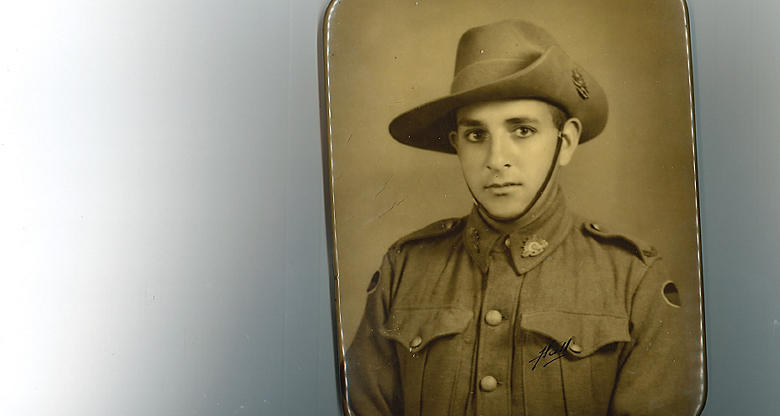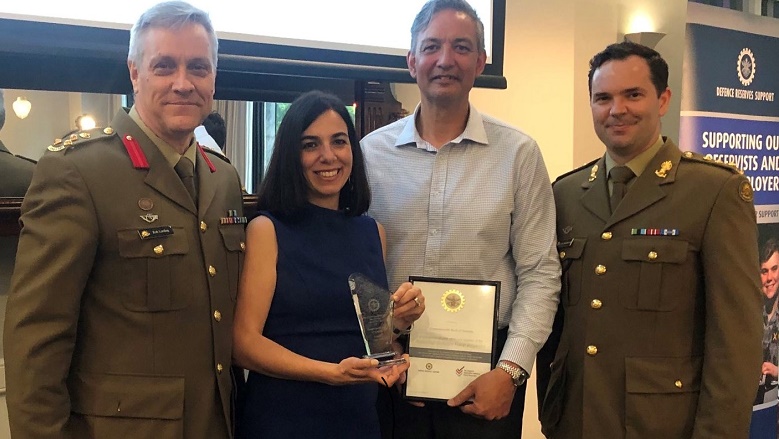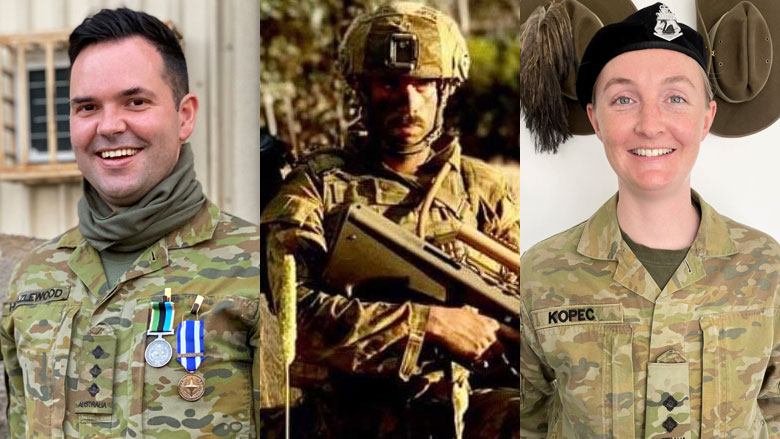State Protection Acts severely limited any rights to a normal life for Indigenous Australians. Victor’s family lived outside of Nundle, in the Pine Forests of Hanging Rock, which shielded the family from much of the prejudice and segregation that they experienced on a daily basis.
Despite these injustices, Victor was immensely respected within his community, known for his way with animals, willingness to share knowledge and generosity with his vegetable garden.
“[He was] never without a book in his hand, a capable and competent person around all animals, and a life-long learner,” reflects Linda Smith, an Indigenous Careers Partner at Commonwealth Bank who dotingly remembers her grandfather as “Pop.”
When war broke out in 1939, Victor, then aged 21, was among the first Indigenous Australians to sign up to serve his country. In all, the Department of Veteran Affairs estimates that more than 3,000 Aboriginal and Torres Strait Islander men and women served in Australia and overseas during the six-year conflict.
Victor initially enlisted in the AIF in June 1940 but was medically discharged less than a year later after an accident during a training exercise. Undeterred, he enlisted again in June 1942, and served until his formal discharge from 114 General Transport Company in April 1946.
His motives in joining up were both simple and honourable, recalls Linda: a chance for her pop to protect his community, travel and earn a decent wage.
“It was an opportunity for him to work alongside people, as opposed to being considered less than, all while building a better future,” she says.
But while he was able to achieve all three things and to do so on relatively equal terms, his service to his country counted for little on his return. The injustices that he had briefly left behind still remained, and it would take decades before even the most basic of rights were established for Australia’s First Nations people.
“Being an equal while enlisted in World War Two, yet returning back to a country where he wasn’t even considered a person, was one of the difficult realities of inequality towards Indigenous Australians,” says Linda.
Despite racial injustices and inequalities, Victor always remained patriotic and proud of his military service, with Anzac Day always honoured in his family.
To Linda’s family, April 25 means commemorating historical trauma, while coming together as a community with respect.
“Each Anzac Day, Pop would march, and I would also march with my school and later played in the marching band,” Linda recalls. “It always made me feel proud and a strong sense of honour for Pop and those who fought alongside him.”
For Linda, his legacy and the sacrifices made by people such as her grandfather has made possible the opportunity for her to build a successful career of her own.
When Linda’s grandfather visited her at her first job – a teller at a branch at the age of 16 — he proudly remarked, ‘that’s my granddaughter’.”
Victor’s daughter – Linda’s mother — worked as a housekeeper when she was 16. In contrast, his granddaughter was able to start her working life in a completely different, more inclusive and equal type of workplace at the same age. So, the change he saw in one generation was momentous.
“I was able to experience his pride,” reflects Linda. “He sacrificed so much and was able to see his family in places he’d never imagined that we would have been in 50 years ago.”





